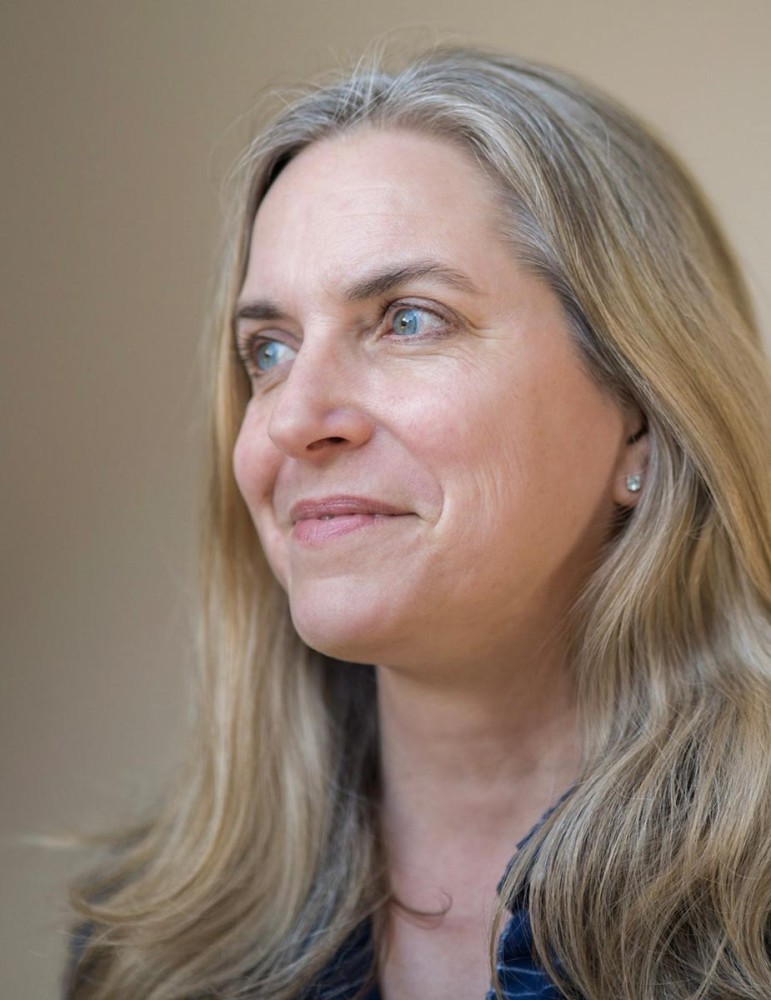I recently took a drive along Vermont’s Otter Creek in order to see part of the land-scape explored by photographer Caleb Kenna for his feature in this issue. I didn’t have a particular plan, beyond meandering through some of the Vermont towns through which the river flows. Along the way, I discovered many places that warrant future exploration. Glimpses of Otter Creek Swamp with the afternoon sun filtering through a complex mix of trees and shrubs sparked wonder. But it was the end point in Vergennes that truly caught my heart. I’ve wanted to explore Vermont’s first city ever since learning that my great-great-grandmother had been born there in the mid-1800s. Otter Creek took me to a park below the falls that inspired mills to be built along the river’s shore, and an interpretive sign that described the history of this place, including the era that my ancestors lived in town. I’m delighted to have stood on ground likely walked by my grandmothers and grandfathers many, many years ago.
Kenna also highlights the Missisquoi National Wildlife Refuge in Swanton, near where some of my ancestors crossed the border from Quebec. All indications are that they came here for work in the paper and cotton mills. Their departure from there to New York, then Massachusetts, and on to Rhode Island chart a familiar path of French-Canadian immigrants following the mills. Six generations of my family lived and worked along the Richelieu River – which rises from Lake Champlain and flows northward in Canada. I shouldn’t be surprised that rivers flow through my familial blood – both the Connecticut and Penobscot rivers constantly call me home – a persistent tug between two places.
The draw of rivers, history, and places we call home appear in stories throughout this issue. Frederick Thurber writes eloquently of the healing power of rivers in his article on a fly-fishing retreat in Downeast Maine for men with cancer. Writer and carpenter Adam Miller explains the art of timber framing using the scribe rule – and historic wood originally meant for shipbuilding in the late 1800s. For Miller, this work at a site in northwestern Connecticut was a homecoming of sorts, with a return to the place where he first learned timber framing. And in an excerpt from a recent Community Voices interview by Meghan McCarthy McPhaul, Nancy Baker reflects on living in the house her grandfather built, on land her family has owned and managed since 1861.
Themes of family and legacy run through a new publication by Cornell University and the University of Massachusetts, also highlighted in this issue. The publication shares the stories of Black forestland owners, touching on their attraction to the lands they own, their family histories, challenges they’ve encountered in learning to manage their properties, and resources that can benefit others who own or wish to purchase land. The included resource list can inform a conversation among forest management and conservation communities while helping to remove barriers to land stewardship.
The reflections of these landowners spurred thoughts about the house I own in Old Town, Maine, and my attachment to it. When I was a child and young adult, it didn’t occur to me that I could purchase a home on my own. To my knowledge, none of my grandparents – all the children of immigrants – owned homes. My parents’ house in western Massachusetts kept our family grounded to a place in a way that past generations did not experience. My house is in a mill town – actually a small city, like Vergennes – where the strength of the Penobscot River powered mills and now provides electricity to homes and businesses in the area. My work is grounded in New Hampshire, but my connection to this Maine home and the region is something I do not want to let go.
Finally, in “A Place in Mind,” writer Judy Chaves wonders if it’s possible for a newer, grander landscape to supplant the connection to one’s childhood home. I’d love to hear from more of our readers about their own “place in mind,” and I wonder… What attaches you to a particular place? How are your family ties woven in there? How has place shaped where you work and play?


